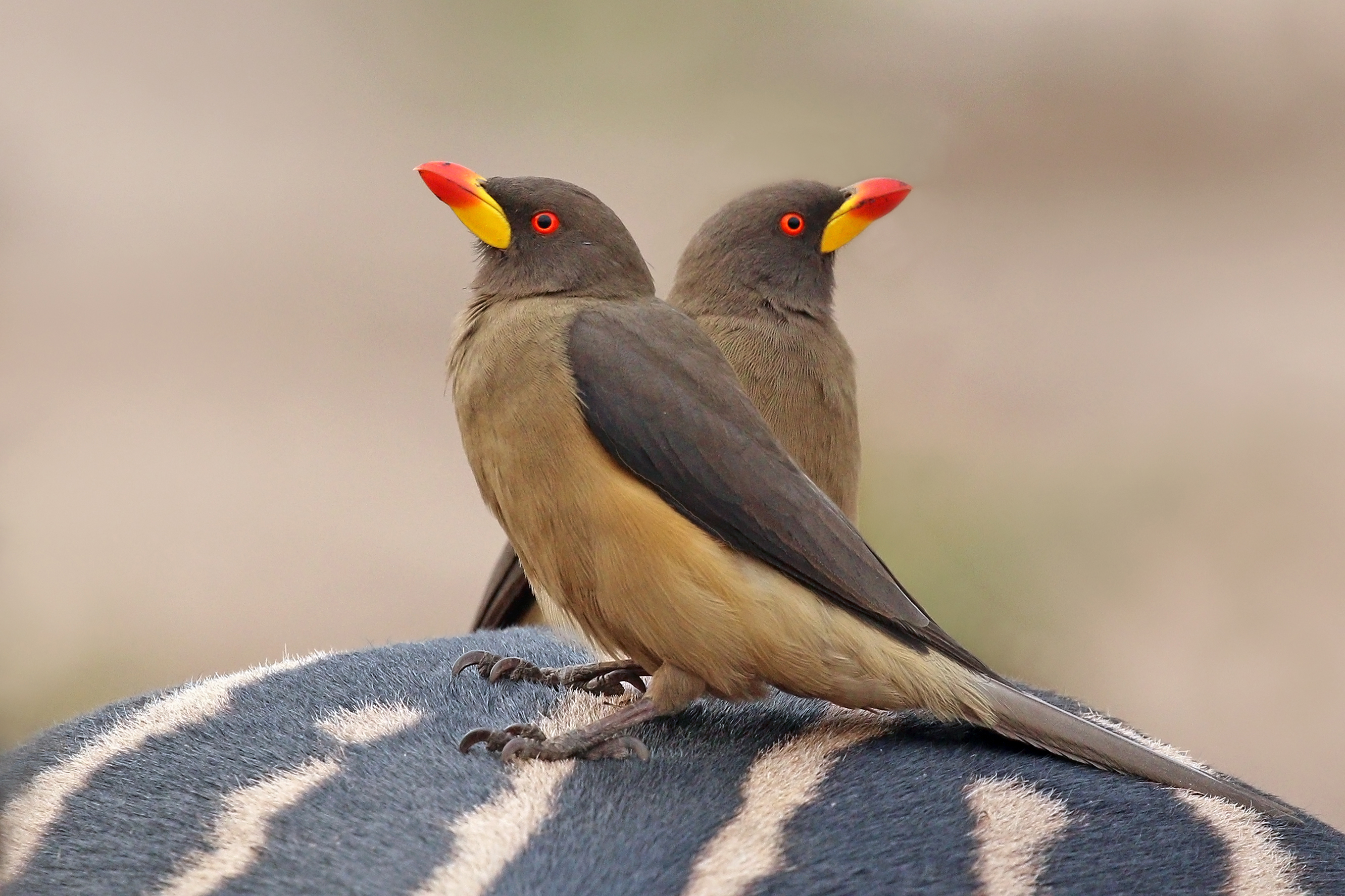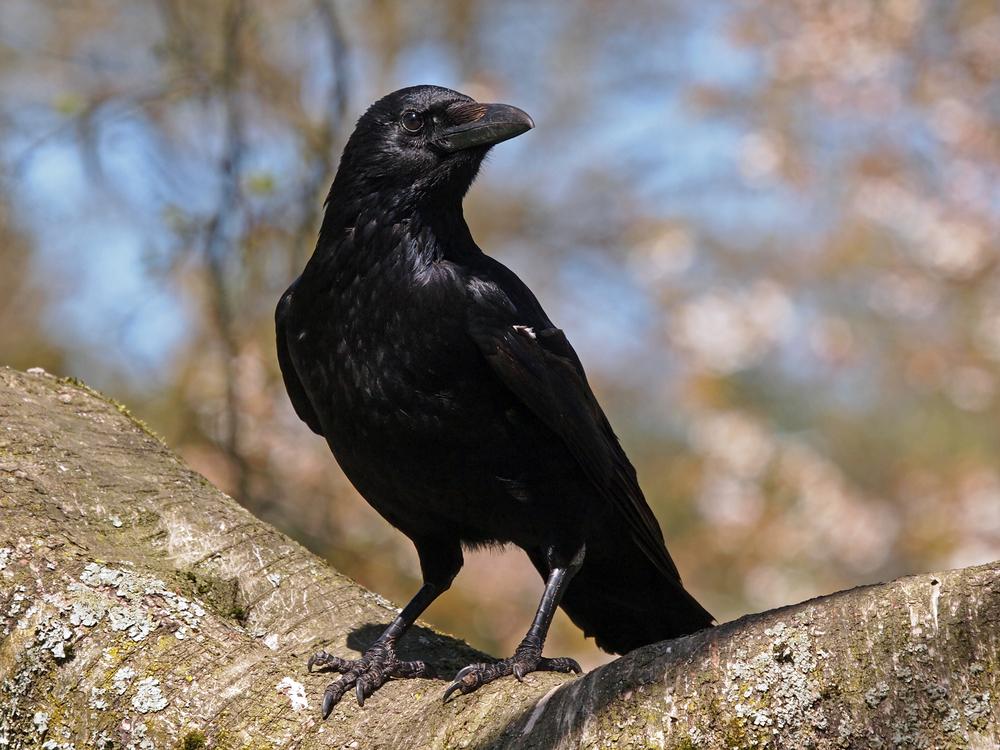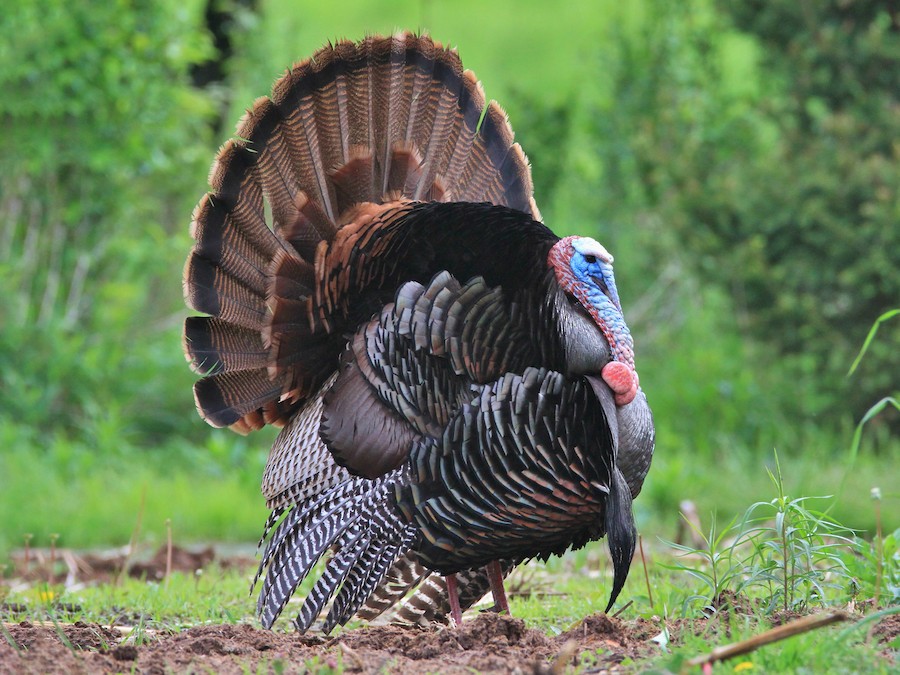Ticks: tiny parasites that latch onto warm-blooded creatures and feed on their blood for survival. Closely related to spiders and mites, these arthropods are a threat to both your pets and you. Their bite, although harmless and painless in some cases, can potentially cause infectious diseases like Tularemia and Lyme Disease.
While there are several tick removal treatments available out there, the path to leading a tick-free life begins with prevention. If you want to stay tick-free in the long run, you should start by getting rid of all of their possible entry points in your home.
Those who live in homes with a yard, lawn, or garden are most exposed to the threat of ticks, as these pesky pests inhabit leaf piles, grasses, shrubs, and trees most commonly. One way of making your garden a tick-free zone is to keep it clean and trimmed routinely, and the other one is to employ the help of Nature’s own tick controllers.
There are quite a few birds that will gladly take a bite out of an invading tick. This article will talk about eleven such birds that feed on ticks and can help solve your pest problem. Let’s get started!
Oxpeckers

Family: Buphagidae
Lifespan: around 15 years
Native to the savannahs of sub-Saharan Africa, the Oxpeckers are a couple of birds belonging to the Buphagus genus. Here are the name of the two Oxpecker species:
- Red-billed Oxpecker (Buphagus erythrorhynchus)
- Yellow-billed Oxpecker (Buphagus africanus)
Both species possess a dark, olive-brown plumage with paler underparts and long, dark tails. Their eyes and bills are colored brightly with orange and yellow (depending upon the species), with short legs and sharp claws.
Oxpeckers have been named after their tendency to perch on large mammals to feed on their blood as well as the parasites on their bodies. Their most-preferred mammals include giraffes, zebras, impalas, cows, hippopotamuses, and rhinoceroses.
Ticks make up a large part of Oxpeckers’ diet. In addition to these, the birds also feed on dandruff and earwax found on mammals, as well as other insects that live on their bodies.
Guineafowls

Family: Numididae
Lifespan: around 10-15 years
Considered the oldest of all gallinaceous birds, the Guineafowls are a group of ground-dwelling birds endemic to Africa. Their family consists of six unique species divided into four genera.
While the individual appearances of guineafowls vary from species to species, all of them share certain physical attributes. They possess bare heads, with some species harboring a head crest. Their heads are significantly small in comparison to their heavy bodies, with small eyes and short, pointed bills.
The color of the plumage of all guineafowl ranges between dark grey and black, coupled with strong, thick legs that lend them their speed. Displaying sexual dimorphism in size, the adult females of all species are heavier than their male counterparts.
Guineafowls are ground foragers that primarily feed on flies, locusts, maggots, scorpions, and other invertebrates. Ticks are the main part of their diet. A single guineafowl can consume more than 5,000 ticks in a year, which is why they play a major role in tick control and prevention of tick infestation among livestock.
Ducks

Family: Anatidae
Lifespan: around 5-10 years
Ducks are a large group of waterfowl belonging to the same family as geese and swans, but smaller. These aquatic birds are found in both saltwater and freshwater and have a cosmopolitan distribution. There are some popular duck species found in the United States, such as Muscovy duck, Mallard duck, and Ruddy duck.
All ducks have rounded but broad bodies with round heads, long, flat bills, strongly webbed feet, and wings set towards the back of their bodies. The coloration of their plumage can vary greatly from species to species.
Just like their plumage, the diet of ducks witnesses a lot of diversity as well. These birds are divided into different groups based on their diet. Some species feed from the surface of the water, while others dive deep to forage underwater.
When on land, they feed on grass, worms, small insects, and just about anything they can find on the ground. These voracious eaters are also known to feed on ticks. The pecten in their bills helps them filter out ticks straight from the grasses, making them effective tick controllers. A single duck can eat roughly a thousand ticks in a day.
Wild Turkey
Scientific name: Meleagris gallopavo
Height: 100-125 centimeters (39-49 inches) in males; 76-95 centimeters (30-37 inches) in females
Weight: 5-11 kilograms in males; 2.5-5.4 kilograms in females
Wingspan: 1.2-1.4 meters (4.1-4.9 feet)
Lifespan: around 3-5 years
Wild Turkeys are one of the two extant turkey species in the world, with the other one being the Ocellated Turkeys (Meleagris ocellata). Endemic to North America, they’re the heaviest of all gallinaceous birds.
The adult Wild Turkeys are highly sexually dimorphic both in plumage and size, with the males being considerably larger and heavier than their female counterparts.
The males have a red, featherless head with a thin, red throat and neck. Their wings are glossy bronze in color, with the iridescence of red, gold, copper, and purple spread over different areas. Their dark, fan-shaped tails have touches of gold as well.
The female Wild Turkeys look very different in comparison. Their overall dull brown plumage has little-to-no iridescence; neither is their tail arched or fan-shaped. However, both sexes possess identical black eyes and short, pointed bills.
Wild Turkeys are omnivores that enjoy feeding on a variety of nuts, seeds, and berries. Because their foraging grounds also happen to be the habitats of ticks, the two often cross each other’s paths.
And being the opportunistic feeders that they are, turkeys always gobble up the ticks. It is believed that these birds are capable of eating over a hundred thousand ticks in their short lifetime.
Cattle Egret
Scientific name: Bubulcus ibis
Height: 46-56 centimeters (18-22 inches)
Weight: 270-512 grams
Wingspan: 88-96 centimeters (34-38 inches)
Lifespan: around 10 years
Although the plumage of Cattle Egrets bears similarities with other egret species, they’re more closely related to the herons. These waders are endemic to Europe, Africa, and Asia, but have gained a cosmopolitan distribution in the last century.
Cattle Egrets possess a small head, thick, orange bills, a sturdy neck, and a stocky body covered in white plumage. Like other egrets, this species also develops buff-stained plumage around their crown, chest, and back in their breeding months.
Both sexes of Cattle Egrets possess an identical plumage, displaying dimorphism in size. The males are slightly larger than their female counterparts and have longer breeding plumes as well.
Although Cattle Egrets are omnivores, insects, including ticks, make up a large part of their diet. In fact, their name is derived from their tendency to live alongside the cattle animals and feed on the ticks and flies on their bodies. Because this practice benefits both parties, the cattle animals don’t mind having egrets around either.
Woodpeckers
Family: Picidae
Lifespan: around 4-12 years
Named after their tendency to drum their bills against wooden surfaces, the woodpeckers have a large avian family with over 240 unique species divided into 35 genera. In fact, 17 out of these 240 species can be found in the United States as well.
While the appearances of different Woodpecker species vary a great deal, their diets are quite similar. These opportunistic feeders have an omnivorous diet and mainly feed on beetles, termites, ants, spiders, caterpillars, bird eggs, nestlings, lizards, rodents, fruits, nuts, and sap.
While on trees, these birds are capable of easily catching ticks using their sticky tongues. At times, they’re also known to puncture the tick’s body with their bills before consuming them whole.
Chickens
/chicken-breeds-small-farm-backyard-flock-3016586-hero-d5588b0367b24e2ea4d51f674c9ffb52.jpg)
Scientific name: Gallus domesticus
Height: 70 centimeters (27 inches)
Weight: 2.5-5 kilograms
Wingspan: 45-60 centimeters (17-23 inches)
Lifespan: around 5-10 years
Although the origin of chickens is traced to southeastern parts of Asia, this junglefowl species has a cosmopolitan distribution today, mainly because of their use to mankind. Men have been consuming chicken meat and eggs for over 2,000 years and have recently started keeping them as backyard pets as well.
Chickens are primarily ground-dwelling birds capable of limited flight. These gregarious birds have a shiny, colorful plumage, a fleshy red comb atop their head, lobed wattles hanging below their bills, and highly arched tails. While both sexes possess an identical plumage, the females are duller in appearance than their male counterparts.
Being omnivores, chickens have a diverse diet consisting of insects, snails, earthworms, seeds, and even carcasses. And while ticks might not be an integral part of their diet, chickens will eat any ticks that they can find within their foraging range.
Partridges

Family: Phasianidae
Lifespan: around 3 years
Belonging to the same family as quails, pheasants, and turkeys, Partridges are a group of ground-dwelling birds with a widespread global distribution. The partridge family is divided into thirteen genera, consisting of a total of 44 unique species. Within the United States, you’ll find only one of these birds: the Grey Partridge (Perdix perdix).
Partridges are medium-sized birds that have stocky bodies and plumage colored in grey or brown (depending on the species). They possess a short, conical beak that is well-suited for their primarily seed-based diet.
Although partridges prefer a granivore diet, they’re omnivores and can eat insects as well. Their young ones are particularly keen on eating insects, especially ticks, to add more protein to their diet.
Partridges are gifted with a bristled tongue. The bristles on their tongue help them glean insects and ticks from leaf piles, shrubs, and grasses.
Fun fact: Did you know that baby partridges can digest only insects in the first ten days of their lives?
Quails
Family: Odontophoridae
Lifespan: around 2-6 years
Quails are a group of tiny, terrestrial birds that belong to the family of pheasants and turkeys. These birds have two separate families – Old World and New World Quails – both distantly related but similar in appearance and physical traits. There are 34 unique Quail species in the New World Quail family, with five residents of the United States listed below:
- California Quail
- Mountain Quail
- Scaled Quail
- Montezuma Quail
- Gambel’s Quail
All quails have a small head with short, pointed bills and rounded, dark eyes. You can also notice crests in some species. Their plumage is brownish in color, with some variations in different species. They have short but powerful legs that make them great runners.
Quails have an omnivorous diet and hunt for food in tall vegetations. Therefore, while these birds do not actively seek ticks, any tick they find while foraging is gobbled right up.
Roadrunners
/greater-roadrunner-5a1c36e789eacc003790c3e0.jpg)
Family: Cuculidae
Subfamily: Neomorphinae (New World Ground Cuckoos)
Lifespan: around 7-8 years
Also known as Chapparal birds, the Roadrunners are ground-dwelling cuckoo birds that make up the Geococcyx genus. They occur in North and Central America, with an abundant population in Mexico. Following are the two roadrunner species:
- Lesser Roadrunner (Geococcyx velox)
- Greater Roadrunner (Geococcyx californiacus)
Both these species have a somewhat similar appearance, possessing small heads, grey, sharp-edged bills, slender bodies, long tails, and legs. Their plumage is primarily black in color, with golden streaks scattered all over. They also have a distinctive crest on their otherwise bare heads.
All adult roadrunners have the same plumage regardless of their sex. Dimorphism is only seen in the size of these species, with the females being smaller and weighing lesser than their male counterparts.
Roadrunners are opportunistic feeders with an omnivorous diet consisting mainly of insects, rodents, and small reptiles. Although these birds aren’t prolific tick-eaters, they often catch them while hunting for food in the forests. And once the ticks are on their feathers or skin, they’re bound to end up in their bellies.
Crows

Family: Odontophoridae
Lifespan: around 2-6 years
Known for their high intelligence, Crows are members of the Corvid family with the most widespread global distribution. These medium-sized passerine birds sport an all-black appearance, closely resembling the ravens, although the latter is significantly larger.
There are over 40 species of crows in the world, with the color of their plumage ranging between dark grey and black. Despite the minor differences among the species, they still happen to be a group of birds with the most similarities.
Perhaps this is also why it’s more difficult to differentiate between two crow species than other birds, like herons, ducks, eagles, and so on. Both adult sexes of crows possess the same plumage, only the males are slightly larger in size.
Crows have an omnivorous diet and can eat literally anything they find, including carcasses. Ticks, as a food source, are quite appealing to these corvids because they’re a rich source of protein (due to their blood-sucking nature). These parasites also have a widespread population, which makes them an abundant food source for the crows.
Summing it up
With this, we’ve reached the end of this article. Birds are a key part of the ecosystem and help keep nature in balance. The birds mentioned above eat ticks – which helps reduce the population of these blood-sucking parasites.
You might’ve noticed that a majority of these birds are ground-dwellers. It makes a lot of sense since the ticks generally live in grasses and shrubs outdoors, making them easy prey for the ground foragers.
If your garden or yard has been infested by ticks, bringing home these natural pest controllers is worth a try before you opt for pesticides.
11 Birds That Look Like Robins




